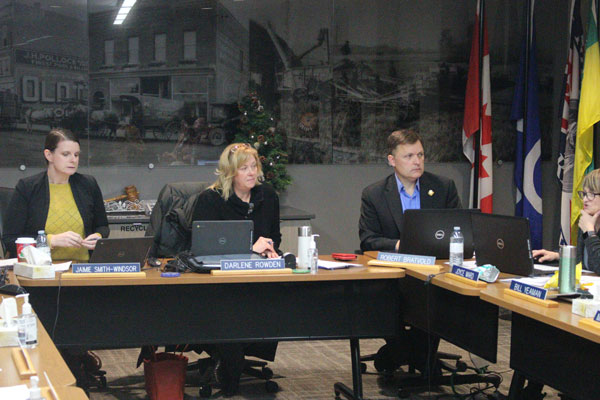
Representatives from the Saskatchewan Rivers School Division will meet with First Nations leadership from the surrounding communities on April 24.
Trustees discussed possible topics of interest during their regular meeting on Monday. Education director Robert Bratvold said they plan on reaching out to local First Nations leaders before settling on discussion topics. He’s confident the meeting will be a productive one.
“I think it’s going to be a fantastic opportunity for meeting with elected leaders and education leaders in our First Nations communities and I am looking forward to that conversation at the end of April,” Bratvold said.
“We like to meet with the provincial government leaders, our MLAs and we meet with the federal representatives, with our MPs. We meet with the city and the RMs and we connect with the municipalities, so this is a way to connect with those Indigenous leaders in First Nations communities on reserves.”
The plan is to invite Chief and Council or the education representatives for the discussion.
“We have lots of good connections and lots of connectivity at the student level and at the staff level,” Bratvold said. “This is an opportunity to strengthen that connection among the elected and senior leaders.”
During Monday’s meeting, the board also discussed a previously co-sponsored resolution with the SSBA Indigenous Council about Indigenous representation. SSBA President and rural Saskatchewan Rivers trustee Jaimie Smith-Windsor started the discussion, which focused on an area that came from a discussion paper on the subject of disenfranchisement of voters and candidates in school board elections.
Bratvold said the discussion would be on the list of possible subjects, along with programming, services and relationships with First Nations.
“That one about disenfranchisement will be a piece of that,” Bratvold said. “There are lots of layers and lots of complexities to it. It can be stated and summarized fairly simply and clearly but there are lots of complex factors.”
The discussion focused on how the Local Governance Act excludes Saskatchewan citizens that live on non-assessable lands. Non-assessable lands include First Nations reserve lands including Treaty-land entitlement located in a city, resort properties and provincial and national parks.
“I think that’s a fairly healthy conversation to have at the board table, to really reflect on what local voice means, what electorate and franchisement, disenfranchisement mean, so it was a really good conversation,” Bratvold said.
School division administration has been charged with attempting to figure out how much non-assesable land exists in Saskatchewan Rivers, which includes all or parts of some reserves, resort properties and Prince Albert National Park.
“We had some expectation that the School Boards Association was going to do some work on that and they have done some,” Bratvold said. “But, there is an opportunity for us to maybe reflect on the work that we might do locally in that direction.”
The discussion around disenfranchisement includes many players, with one of them being local First Nations.
“I think there are lots of different players in the discussion, so one of them will be certainly our First Nations leaders and our school board and then there are some other provincial, and even other some local municipal leaders, who might have some input on this too,” Bratvold explained. “That’s not to mention the legislation as it currently exists. There are several pieces of it that would have an impact here.”
According to the 2020-21 Sask. Rivers annual report, the division has 4,653 self-identified Indigenous students, roughly 1,500 of which are in Grades 10-12. The report shows 8,345 students in Sask. Rivers schools.
michael.oleksyn@paherald.sk.ca

